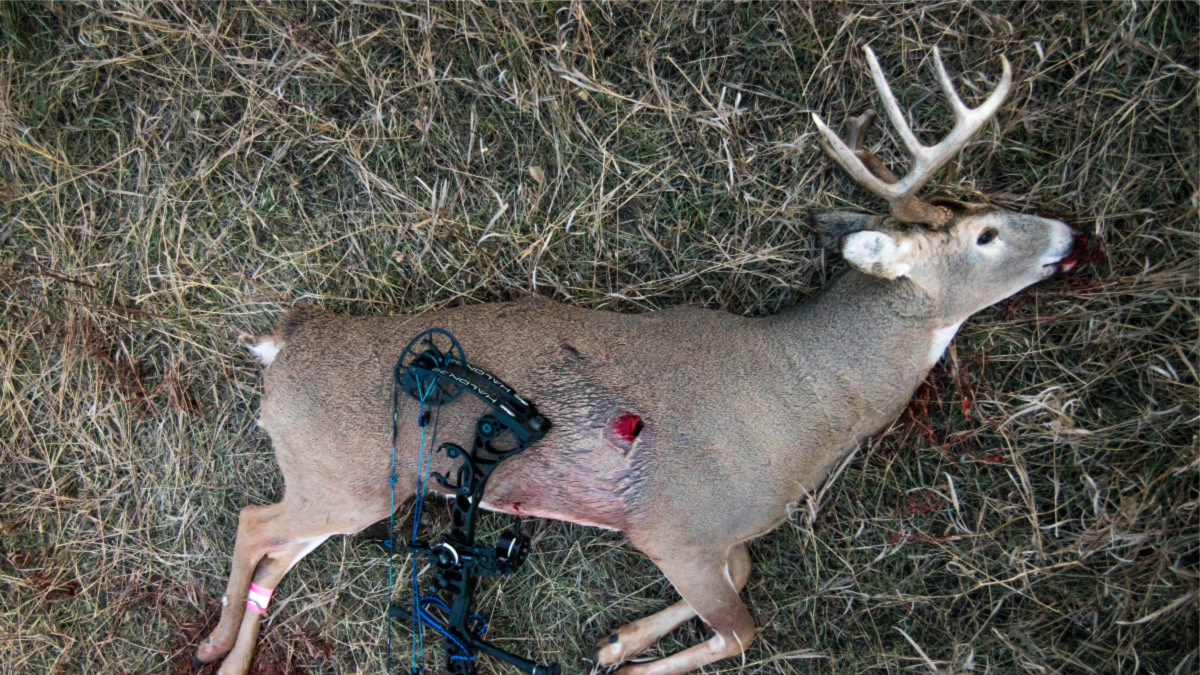
With the increasing use of trail cameras among deer hunters, a new and most vexing whitetail subspecies has stolen the hearts and minds of hopeful hunters across North America: the nocturnal buck.
This is, of course, the big ol’ buck you capture on trail cam every season, but never see during daylight. Hunters obsess over these deer, wondering if it’s possible to even get a shot at such an animal. From my experience, the answer is yes, it is possible, and there are two ways to do it.
Wait Him Out
It’s unlikely that a nocturnal buck will remain that way all season. At some point he’ll slip up and start moving more often in daylight. The key then is to simply wait until those mistakes happen. The trick here is to accurately predict when that will happen, and leave the property alone and the buck unpressured until those key dates.
Two factors in particular are most likely to get a nocturnal deer moving in daylight. The most powerful influence on a nocturnal buck would be the beginning of the rut. Once does start coming into estrus, it’s more likely than any other time of year that a mature buck will get on his feet in daylight. Waiting until the rut to hunt a buck like this is a conservative, safe option.
The second most powerful influence is a significant cold front or precipitation event. Weather like this in either early or late season can often trigger a nocturnal buck to move just a little more during shooting hours.
Find His Home
While the “wait and then strike” strategy certainly works, it’s important to keep in mind that a nocturnal buck isn’t really nocturnal. He’s just not moving in daylight where you’re monitoring. The second option then is to seek the location where this buck does move in daylight.
The closer you get to a buck’s bedding area, the more likely it is that you’ll catch him moving during legal hours. In heavily hunted areas, this might mean you’ll have to get within 50-100 yards of his bed.
To kill that buck, you need to get inside that range without being seen, heard, or smelled. This is a high risk, high reward strategy.
Bucks that are already so pressured as to move little during daylight will react quickly to hunting pressure and become even harder to hunt. This kind of tactic should be reserved for the end of a hunt when you have nothing to lose, or in situations where you have plenty of other options to fall back on.
If you decide to go this route, you’ll need to scout carefully until you find the buck’s zone. Keep in mind that a nocturnal buck is likely holed up in the toughest to reach area and surrounded by the thickest, gnarliest cover he can find. Identify that kind of place with big rubs and fresh scrapes, and you’ll be in business. From here, proceed with caution. You can set up new cameras and monitor the area, hunt the edges of the cover and observe, or simply push right in for an aggressive hunt.
Make the wrong choice and he’ll become more nocturnal than ever. Make the right choice and you’ll see him every day on your wall.
Feature image via Captured Creative.






